Abraham Reiss Painter
If it wasn’t for his grandson, the modern world wouldn’t know much about Abraham Reiss, other than that he was one of more than 170,000 Dutch Jews killed by the Nazis during World War II.
Reiss died in July 1943 at the Sobibor death camp in Poland. He and other Jews had been rounded up in Amsterdam and sent to the Westerbork concentration camp. A few weeks later taken to Sobibor on the Poland-Ukraine border. Unlike some of the other Nazi camps that worked prisoners hard until they died of starvation or disease, this location was focused entirely on extermination.
Just over 70 years later, Abraham Reiss’ story was shared by his grandson Jeroen Krabbe, an accomplished actor, director and artist.
Krabbe has appeared in more than 70 films and TV roles, including a James Bond villain in “The Living Daylights,” a bad guy in “The Young Indiana Jones Chronicles,” starred with Harrison Ford in “The Fugitive” and portrayed Vincent Van Gogh in a TV mini-series. He’s been a multiple winner at several film festivals in the U.S. and Europe, and received significant acclaim for his first directorial role in 1998’s “Left Luggage.” The film told the story of a liberal Jewish woman who becomes a nanny for a disabled boy during the Holocaust. The film was sometimes compared to “Schindler’s List” in terms of its power and resonance, and showed that humanity is possible even during terrible social times.
Before, during, and after his acting and directing career, Krabbe regularly took the time to find ways to grow and learn as a visual artist, including being the youngest student accepted to the Amsterdam Academy of Performing Arts. He later attended the Rietveld Academy of Art, switched to performing arts, and then went to the National Academy of Fine Arts more than 20 years later.
Krabbe found his niche creating abstract images that are colorful and warm, and enjoyed the opportunity to be inspired by the different locations he would visit world-wide. Wherever shooting took place, he would bring along his watercolors and sketchbook, and sometimes his oil paints, brushes, and an easel.
Today, he maintains a private creative retreat in the Overijssel area, along with an urban studio in the Amsterdam area that once was owned by artist G.H. Breitner. Now in his 70s, he continues to create a variety of oil, watercolour and mixed media pieces.
The inspiration
Krabbe was born in 1944, a year after his grandfather’s death. Growing up, he heard stories of the life of Abraham Reiss, including how he was a successful diamond trader in the 1920s and how he lost much of his fortune in the economic collapse of 1929. And how he was immediately targeted when the Nazis seized The Netherlands.
His father and paternal grandfather were also artists.
But it wasn’t until the 2000s that he found a way to honor the memory of his maternal grandfather Abraham Reiss through his art.
In 2010, he completed nine large-sized paintings with the theme “The Fall/Demise of Abraham Reiss.” These illustrate the final days in the life of Reiss after being arrested and taken to the death camp.
Although Krabbe never felt emotionally ready to visit the camp himself, even decades later, he learned everything he could about what Abraham Reiss likely experienced with the help of letters, newspapers, journals and the stories of camp survivors.
Many of the details came directly from survivor Jules Schelvis, who wrote down his memories in a book, along with details of many of the buildings. These helped provide some of the depth and scale that Krabbe used in his paintings. Schelvis later testified in the trial of a man believed to be a camp guard.
Krabbe has mentioned in several interviews about his Reiss pieces that he used his creative interpretive abilities as an actor to further enhance his paintings. These included a lot of imagination to figure out what Abraham Reiss would have seen and heard and what he would have felt during his final days. This material worked its way into the artwork.
The Abraham Reiss Legacy
Krabbe’s nine paintings chronicle Abraham Reiss’ life of freedom before the war, followed by his arrest and final execution at Sobibor.
The mixed media works show everything staring with Reiss sitting in the forest enjoying life. Then he and the other Jews were rounded up and placed in crowded railroad cars for transport.
The prisoners were forced to strip as groups of geese wandering around the grounds and the chimneys belch smoke. The geese were believed to cover the noise of the killing taking place.
Krabbe’s abstract artistic style and use of charcoal is able to capture much of the bleakness likely felt by Abraham Reiss and others, whether it was the stark landscape or the angry howling, frightening dogs. Chronicles of the experience said prisoners all had a gray sheen due to the dust in the air and the general gloom, which Krabbe included in his figures.
His nine paintings were originally displayed at the Museum de Fundatie in Zwolle, Netherlands. But he continued to look for other opportunities and venues to display them. These served several purposes: they presented audiences with vivid, personal artwork; it helped educate communities about a period of time where so many lives were lost; and were a tribute to the life and death of the artist’s grandfather.
In 2016, the staff at the newly-opened National Holocaust Museum in Amsterdam invited Krabbe to display his nine paintings there. The institution hopes to make people aware what happened to so many Dutch Jews under Nazi occupation. Although much of the world is familiar with the story of Anne Frank, a Jewish girl who secretly lived with her family above a shop in Amsterdam for several years before being arrested, there is less awareness of the many other lost lives.
PREVIOUS GALLERIES FEATURING MY WORK







CONTACT ME
SEND ME A MESSAGE
SUBSCRIBE TO NEWSLETTER

